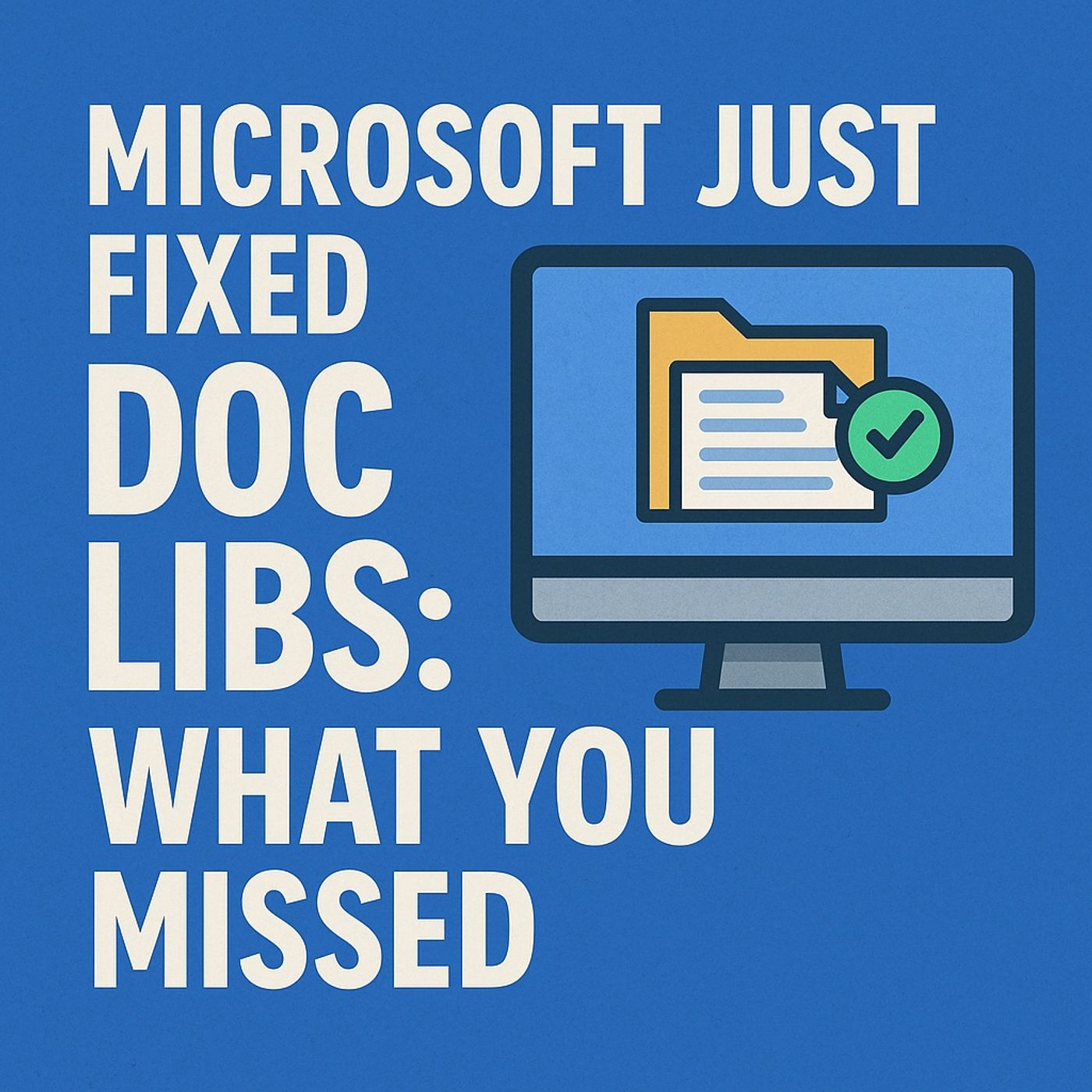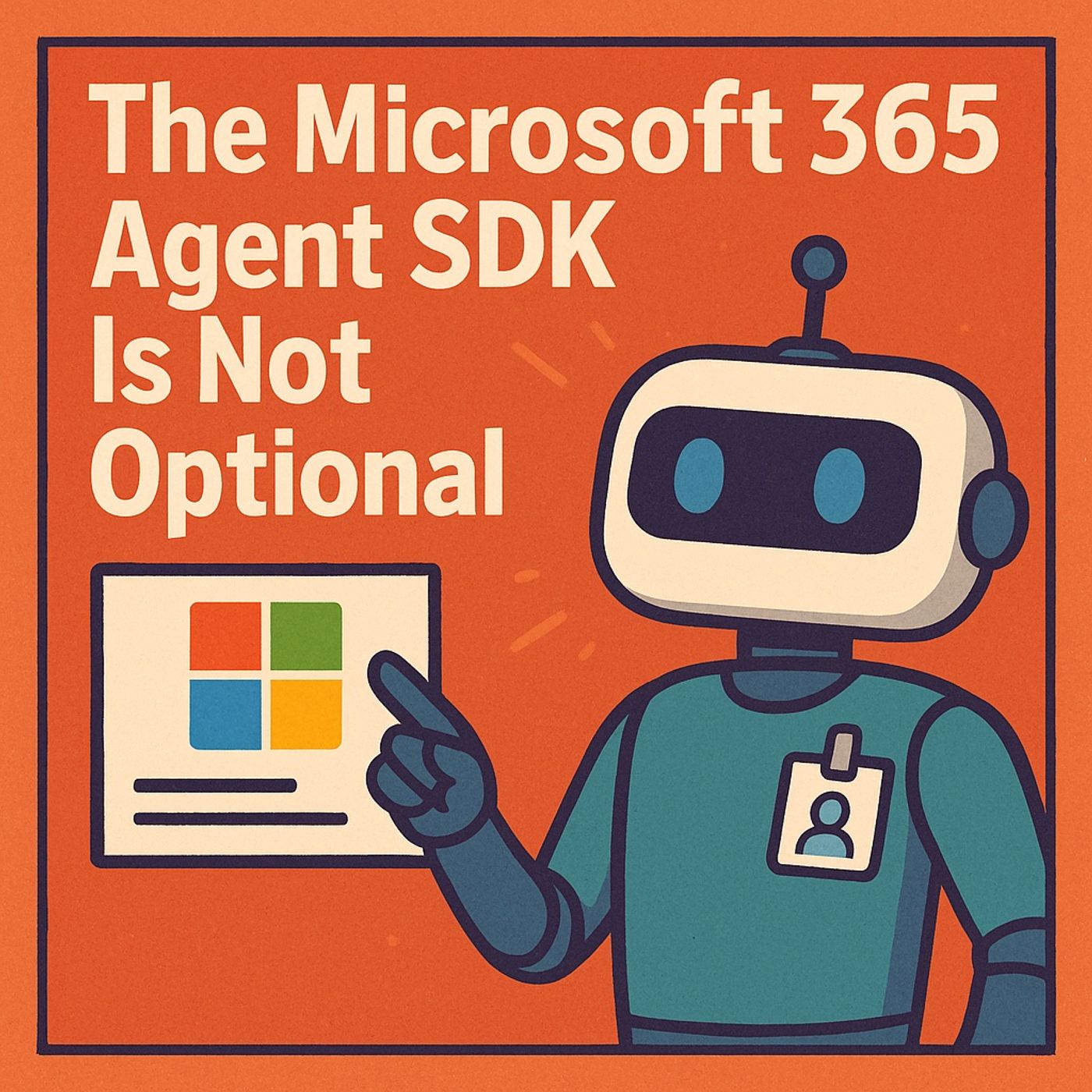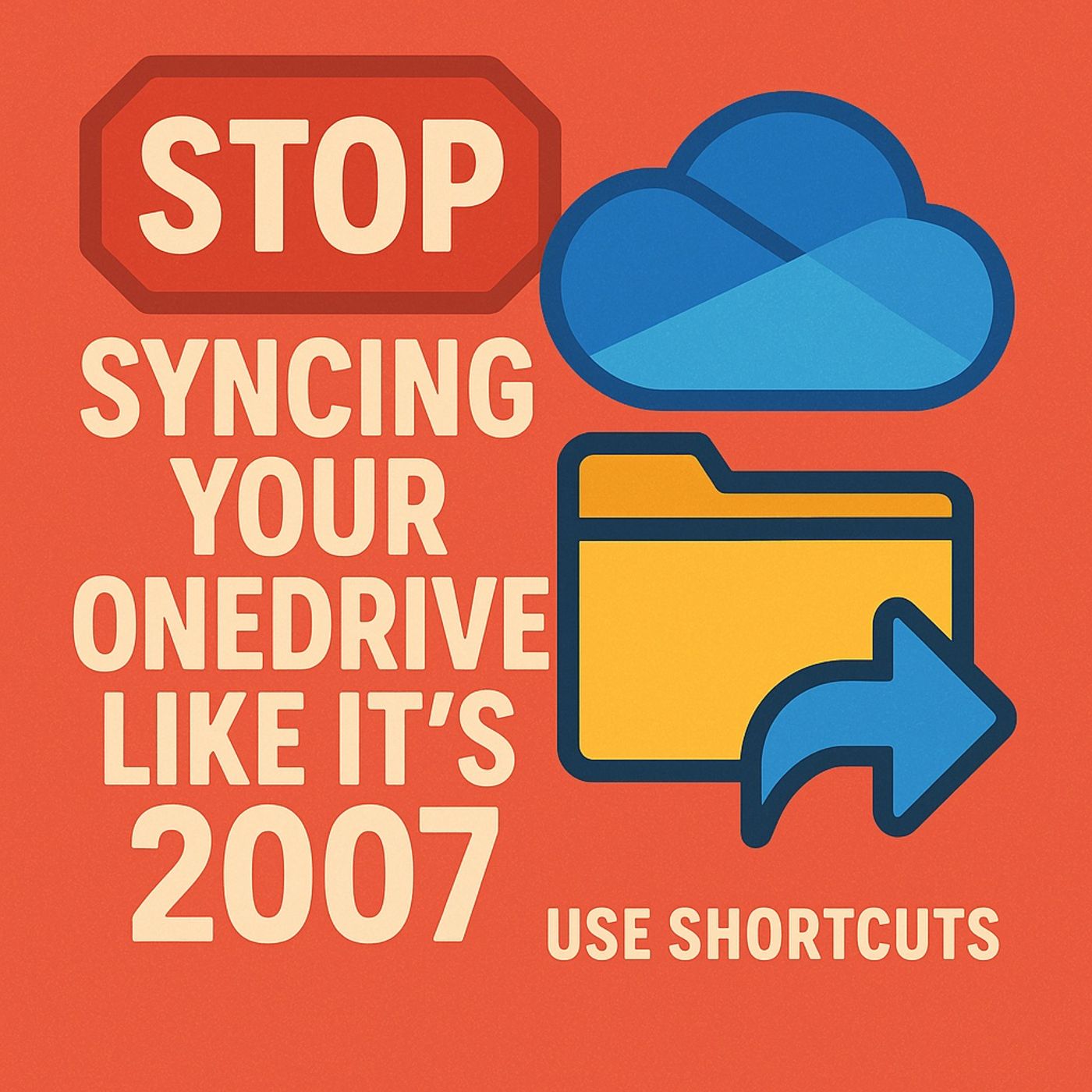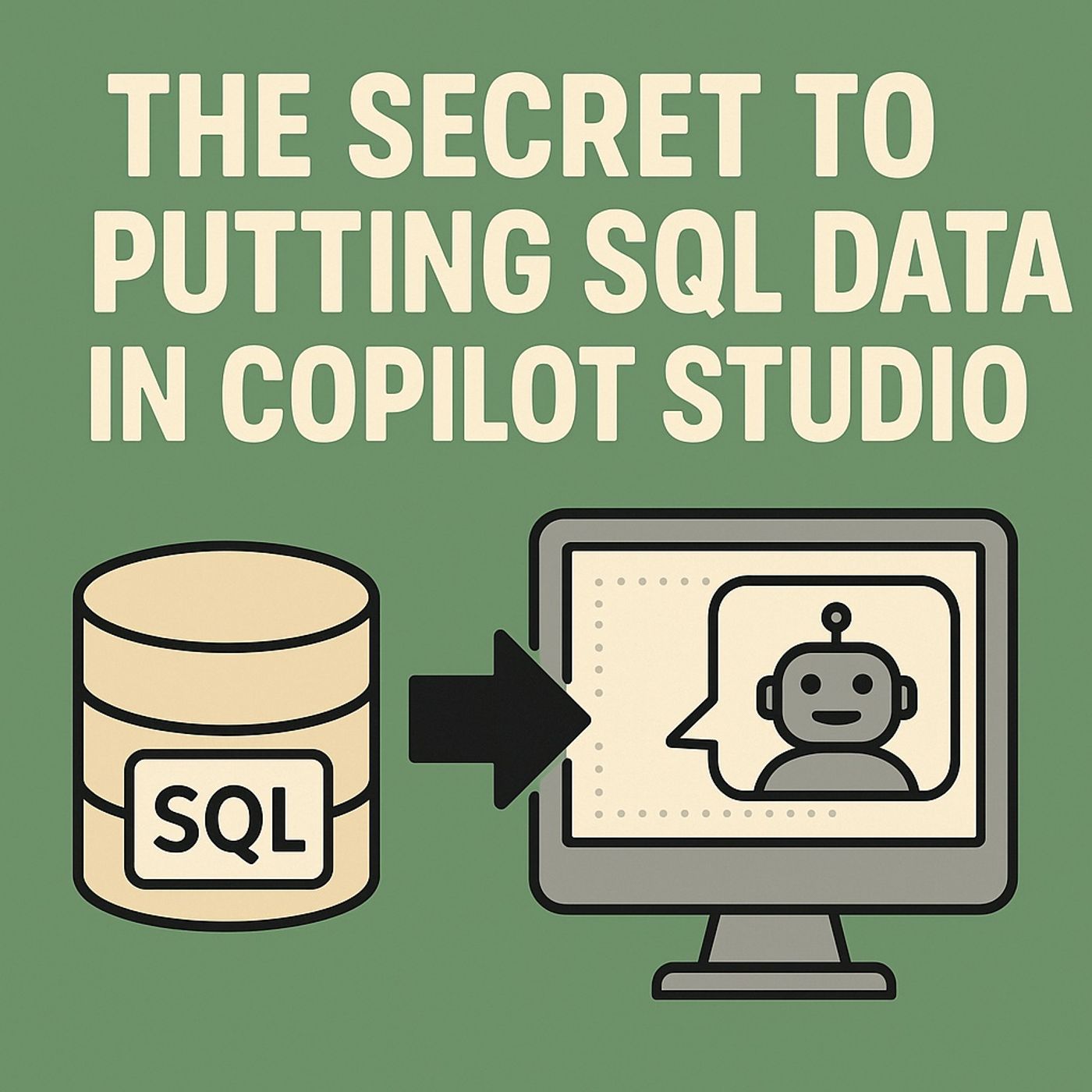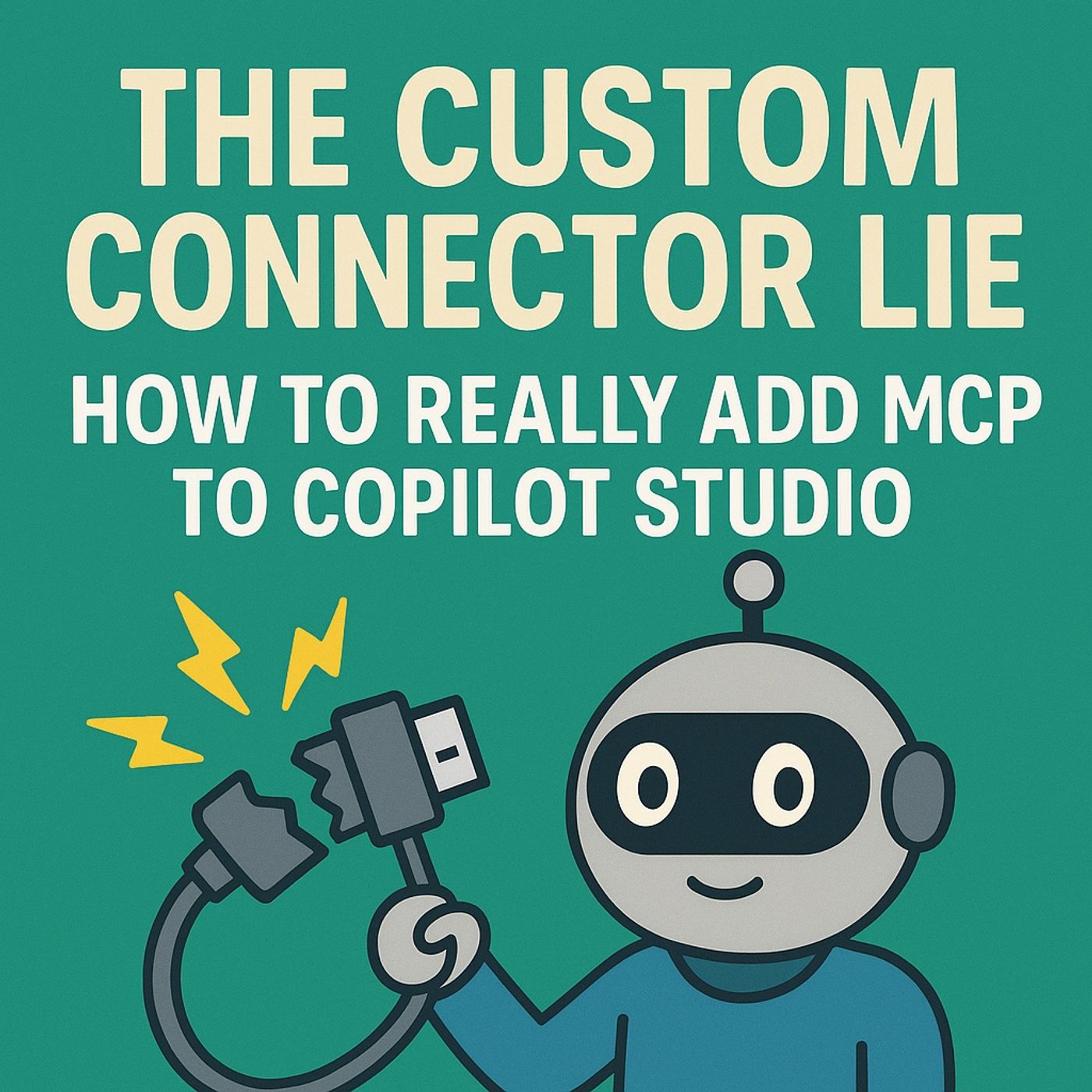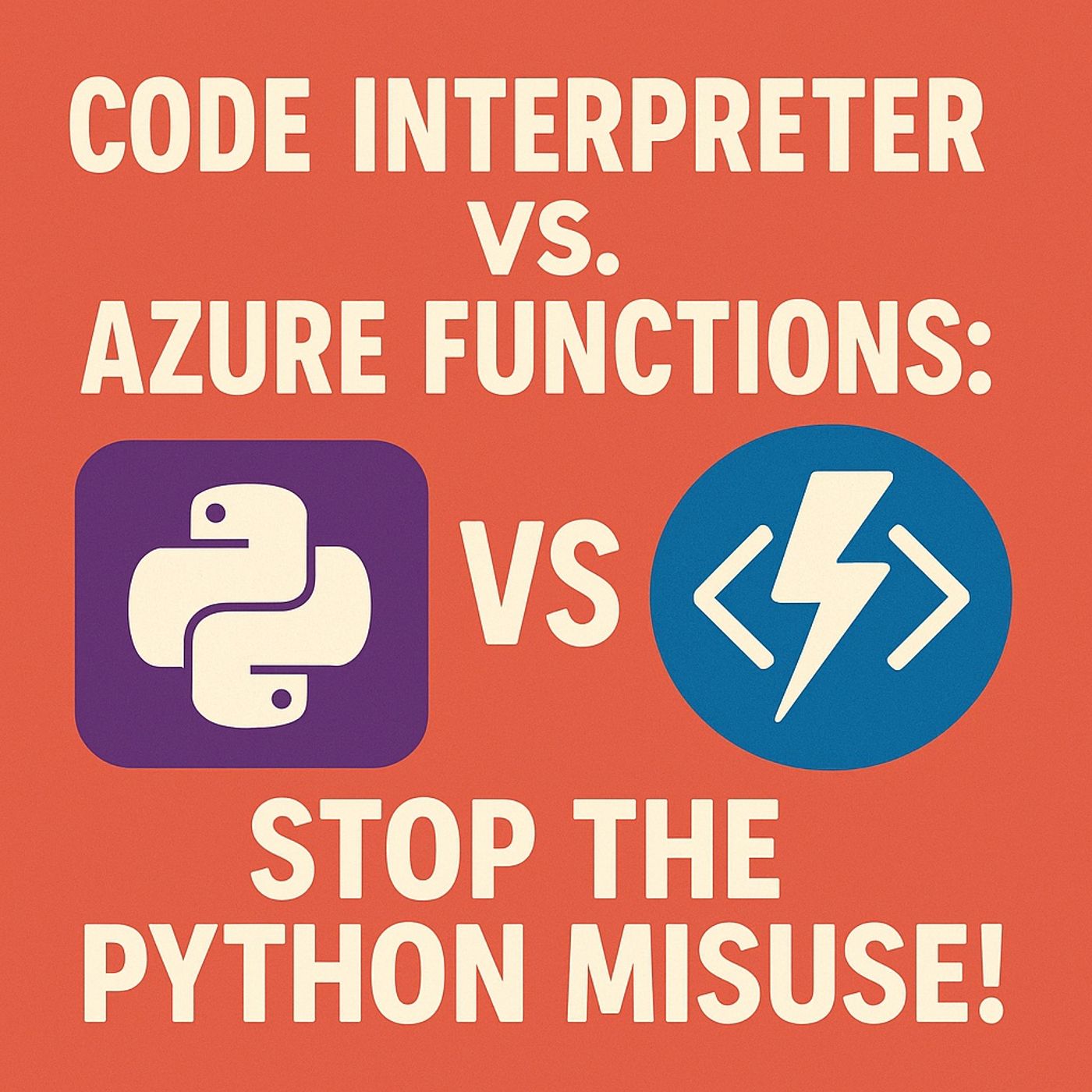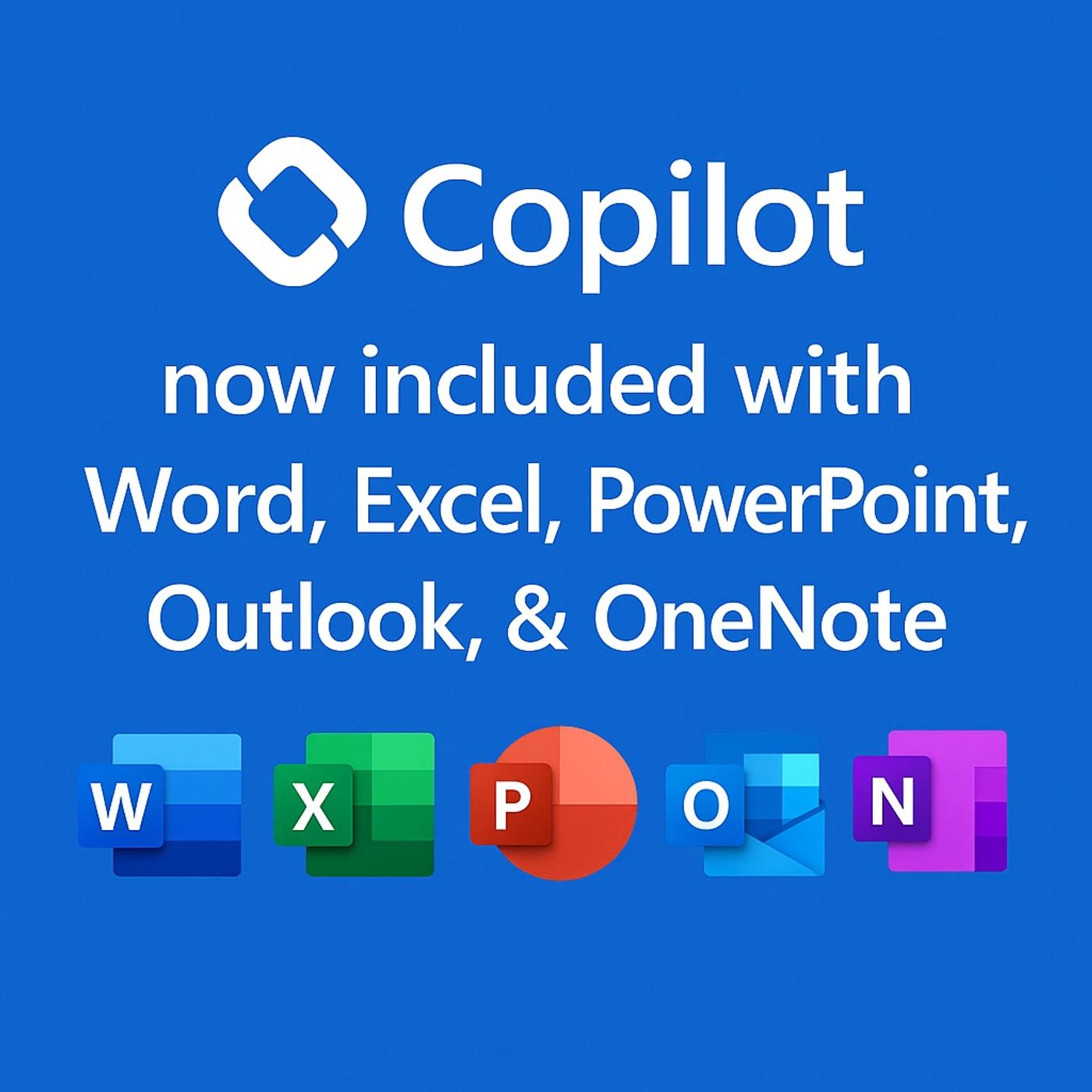Master Power Platform AI: The 4 New Tools Changing Everything
Update: 2025-11-10
Description
Opening: The Problem with “Future You”Most Power Platform users still believe “AI” means Copilot writing formulas. That’s adorable—like thinking electricity is only good for lighting candles faster. The reality is Microsoft has quietly launched four tools that don’t just assist you—they redefine what “building” even means. Dataverse Prompt Columns, Form Filler, Generative Pages, and Copilot Agents—they’re less “new features” and more tectonic shifts. Ignore them, and future you becomes the office relic explaining manual flows in a world that’s already self‑automating.Here’s the nightmare: while you’re still wiring up Power Fx and writing arcane validation logic, someone else is prompting Dataverse to generate data intelligence on the fly. Their prototypes build themselves. Their bots delegate tasks like competent employees. And your “manual app” will look like a museum exhibit. Let’s dissect each of these tools before future you starts sending angry emails to present you for ignoring the warning signs.Section 1: Dataverse Prompt Columns — The Dataset That ThinksStatic columns are the rotary phones of enterprise data. They sit there, waiting for you to tell them what to do, incapable of nuance or context. In 2025, that’s not just inefficient—it’s embarrassing. Enter Dataverse Prompt Columns: the first dataset fields that can literally interpret themselves. Instead of formula logic written in Power Fx, you hand the column a natural‑language instruction, and it uses the same large language model behind Copilot to decide what the output should be. The column itself becomes the reasoning engine.Think about it. A traditional calculated column multiplies or concatenates values. A Prompt Column writes logic. You don’t code it—you explain intent. For example, you might tell it, “Generate a Teams welcome message introducing the new employee using their name, hire date, and favorite color.” Behind the scenes, the AI synthesizes that instruction, references the record data, and outputs human‑level text—or even numerical validation flags—whenever that record updates. It’s programmatically creative.Why does this matter? Because data no longer has to be static or dumb. Prompt Columns create a middle ground between automation and cognition. They interpret patterns, run context‑sensitive checks, or compose outputs that previously required entire Power Automate flows. Less infrastructure, fewer breakpoints, more intelligence at the source. You can have a table that validates record accuracy, styles notifications differently depending on a user’s role, or flags suspicious entries with a Boolean confidence score—all without writing branching logic.Compare that to the Power Fx era, where everything was brittle. One change in schema and your formula chain collapsed like bad dentistry. Prompt logic is resistant to those micro‑fractures because it’s describing intention, not procedure. You’re saying “Summarize this record like a human peer would,” and the AI handles the complexity—referencing multiple columns, pulling context from relationships, even balancing tone depending on the field content. Fewer explicit rules, but far better compliance with the outcome you actually wanted.The truth? It’s the same language interface you’ll soon see everywhere in Microsoft’s ecosystem—Power Apps, Power Automate, Copilot Studio. Learn once, deploy anywhere. That makes Dataverse Prompt Columns the best training field for mastering prompt engineering inside the Microsoft stack. You’re not just defining formulas; you’re shaping reasoning trees inside your database.Here’s a simple scenario. You manage a table of new hires. Each record contains name, department, hire date, and favorite color. Create a Prompt Column that instructs: “Draft a friendly Teams post introducing the new employee by name, mention their department, and include a fun comment related to their favorite color.” When a record is added, the column generates the entire text: “Please welcome Ashley from Finance, whose favorite color—green—matches our hopes for this quarter’s budget.” That text arrives neatly structured, saved, and reusable across flows or notifications. No need for multistep automation. The table literally communicates.Now multiply that by every table in your organization. Product descriptions that rewrite themselves. Quality checks that intelligently evaluate anomalies. Compliance fields that explain logic before escalation. You start realizing: this isn’t about AI writing content; it’s about data evolving from static storage to active reasoning.Of course, the power tempts misuse. One common mistake is treating Prompt Columns like glorified formulas—stuffing them with pseudo‑code. That suffocates their value. Another misstep: skipping context tokens. You can reference other fields in the prompt (slash commands expose them), and if you omit them, the model works blind. Context is the oxygen of good prompts; specify everything you need it to know about that record. Finally, over‑fitting logic—asking it to do ten unrelated tasks—creates noise. It’s a conversational model, not an Excel wizard trapped in a cell. Keep each prompt narrow, purposeful, and auditable.From a return‑on‑investment standpoint, this feature quietly collapses your tech debt. Fewer flows running means less latency and fewer points of failure. Instead of maintaining endless calculated expressions, your Dataverse schema becomes simpler: everything smart happens inside adaptable prompts. And because the same prompt engine spans Dataverse, Power Automate, and Copilot Studio, your learning scales across every product. Master once, profit everywhere.Let’s talk about strategic awareness. Prompt Columns are Microsoft’s sneak preview of how all data services are evolving—toward semantic control layers rather than procedural logic. Over the next few years, expect this unified prompt interface to appear across Excel formulas, Loop components, and even SharePoint metadata. When that happens, knowing how to phrase intent will be as essential as knowing DAX once was. The syntax changes from code to conversation.So if you haven’t already, start experimenting. Spin up a developer environment—no excuses about licensing. Create a table, add a Prompt Column, instruct it to describe or flag something meaningful, and test its variations. You’re not just learning a feature; you’re rehearsing the next generation of application logic. Once your columns can think, your forms can fill themselves—literally.Section 2: AI Form Filler — Goodbye, Manual Data EntryLet’s talk about the least glamorous task in enterprise software—data entry. For decades, organizations have built million‑dollar systems just to watch human beings copy‑paste metadata like slightly more expensive monkeys. The spreadsheet era never truly ended; it mutated inside web forms. Humans type inconsistently, skip fields, misread dates, and introduce small, statistically inevitable errors that destroy analytics downstream. The problem isn’t just tedium—it’s entropy disguised as work.Enter Form Filler, Microsoft’s machine‑taught intern hiding inside model‑driven apps. Officially it’s called “Form Assist,” which sounds politely boring, but what it actually does is parse unstructured or semi‑structured data—like an email, a chat transcript, or even a screenshot—and populate Dataverse fields automatically. You paste. It interprets. It builds the record for you. The days of alt‑tabbing between Outlook and form fields are, mercifully, numbered.Here’s how it works. You open a model‑driven form, click the “smart paste” or Form Assist option, and dump in whatever text or image contains the data. Maybe it’s a hiring email announcing Jennifer’s start date or a PDF purchase order living its best life as a scanned bitmap. The tool extracts entities—names, departments, dates, amounts—and matches them to schema fields. It even infers relationships between values when explicit labels are missing. The result populates instantly, but it doesn’t auto‑save until you confirm, giving you a sanity‑check stage called “Accept Suggestions.” Translation: AI fills it, but you stay accountable.The technology behind it borrows from the same large‑language‑model reasoning that powers Copilot chat, but here it’s surgically focused. It isn’t just making text; it’s identifying structured data inside chaos. Imagine feeding it a screen capture of an invoice—vendor, total, due date—in one paste operation. The model recognizes the shapes, text, and context, not pixel by pixel but semantically. This isn’t OCR; it’s comprehension with context weightings. That’s why it outperforms legacy extraction tools that depend on templates.Now, before you start dreaming of zero‑click data entry utopia, let’s be precise. Lookup fields? Not yet. Image attachments? Sometimes. Complex multi‑record relationships? Patience, grasshopper. The system still needs deterministic bindings for certain data types; it’s a cautious AI, not a reckless one. But the return on effort is still enormous—Form Filler already removes seventy to eighty percent of manual form work in typical scenarios. That’s not a gimmick; that’s a measurable workload collapse. Administrative teams recapture hours per user per week, and because humans aren’t rushing, input accuracy skyrockets.Skeptics will say, “It misses a few fields; it’s still in preview.” Correct—and irrelevant. AI doesn’t need to be perfect to be profitable; it just needs to out‑perform your interns. And it does. The delightful irony is that the more you use it, the better your staff learns prompt‑quality thinking: how to structure textual data for machine interpretation. Every paste becomes a quiet training session in usable syntax. Gradually, your team evolves from passive typists to semi‑prompt engineers, feeding structured cues rather than raw noise. That cultural upgrade is priceless.Let’s look at a tangible use case. Picture your HR coordinator onboarding new employees. Each wee<
Comments
In Channel


